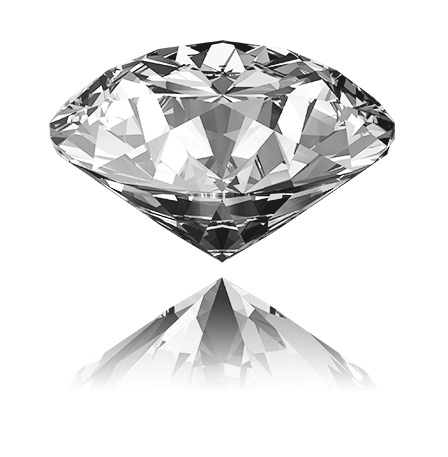Buying a diamond is often an experience filled with mixed feelings for the first-time buyer- excitement towards the prospect of wearing this beautiful jewel or gifting it to that someone special and sometimes trepidation and concern about making the right choice.
1Cut
Of all the 4 Cs, the cut is the most important factor to ensure the brilliant dazzle of a diamond. While all of the other Cs are determined by nature, this is the only factor that is determined by man.


ORRA Crown Star
The Patented 73 Faceted DiamondAt ORRA, we take the business of dazzling diamonds very seriously which is why we have launched the patented 73 faceted diamond to ensure maximum light performance. These 73 faceted diamonds are cut to maximise brilliance, fire and sparkle of a diamond.
2Clarity
Clarity is the assessment of the imperfections present on the surface of the diamond and within the diamond. Imperfections on the surface are called blemishes while they are called inclusions when they are present inside the diamond.


| Flawless (FL) | No inclusions and no blemishes visible under 10x magnification |
| Internally Flawless (IF) | No inclusions visible under 10x magnification |
| Very, Very Slightly Included (VVS1 and VVS2) | Inclusions so slight they are difficult for a skilled grader to see under 10x magnification |
| Very Slightly Included (VS1 and VS2) | Inclusions are observed with effort under 10x magnification but can be regarded as minor |
| Slightly Included (SI1 and SI2) | Inclusions are noticeable under 10x magnification |

3 Colour
The colour of a diamond is evaluated in terms of the degree of absence of colour. The more colourless the diamond, the higher its value. As you go from D,E,F to G,H & I there is a slight tone of yellow or brown.
.



| D | Absolutely colourless with a pure icy look. The highest quality of a diamond colour, which is extremely rare. |
| E - F | Colourless. Very negligible traces of colour can be noticed by an expert gemmologist. |
| G - H | Near-colourless. Colour noticeable when compared to diamonds of better grades, but no discernible colour. |
| I - J, K | Colour slightly detectable. Budget- friendly choice. |
4Carat
The term carat is often misunderstood. It refers to a diamond's weight, not its size. Generally speaking, the higher the carat weight, the more expensive the stone. Two diamonds of equal carat weight, however, can have very different quality and price when the other three Cs are considered.



